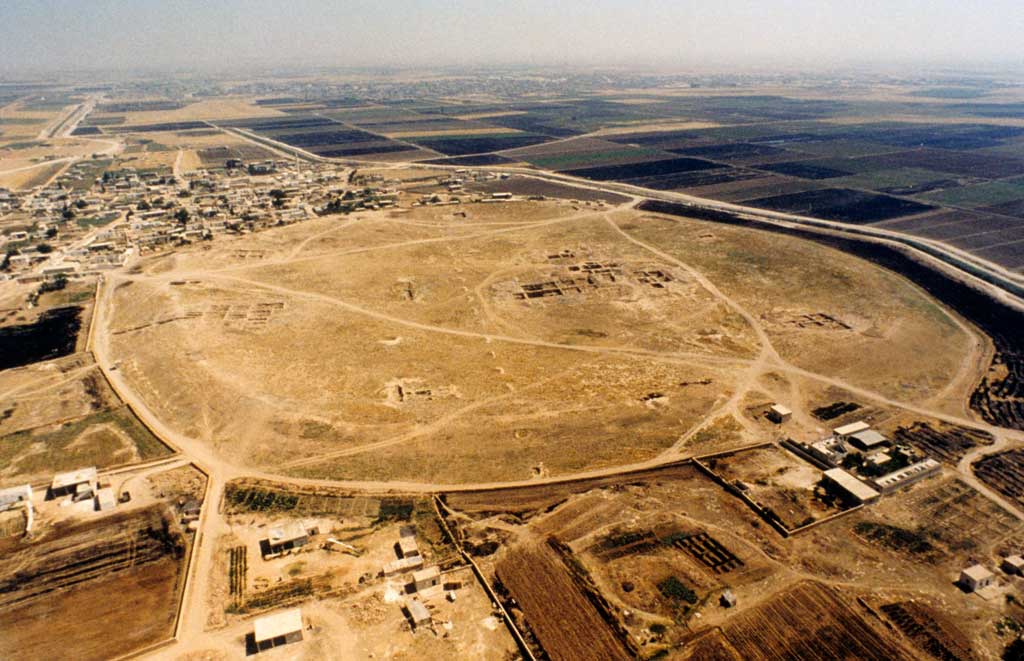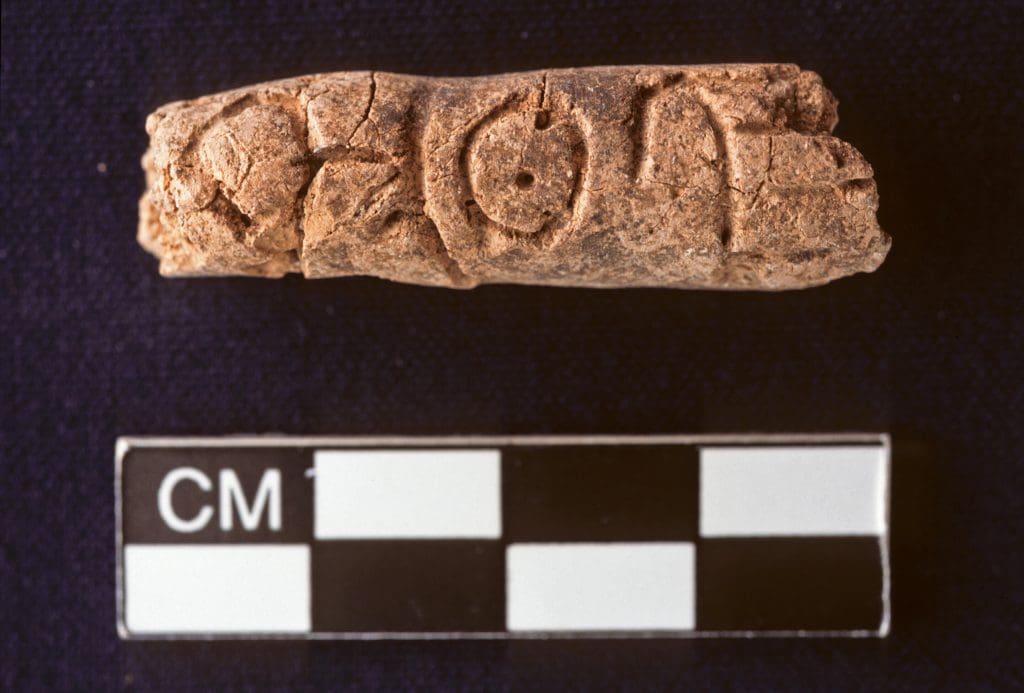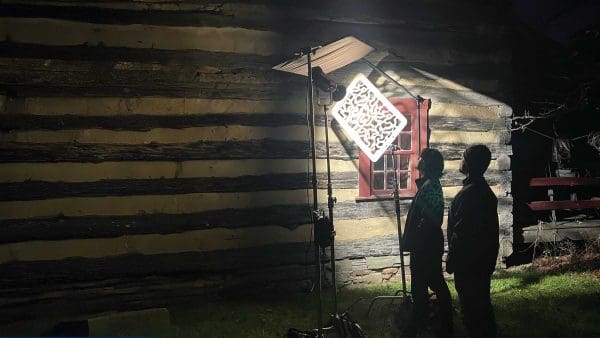When Glenn Schwartz was eight, he settled in with his family one Saturday night to watch a movie called The Egyptian on the television in his Baltimore living room. The 1954 big-budget sweat-and-sandals epic transported him to ancient Egypt, sparking a lifelong fascination that would propel him to a storied career as an archeologist.
“The movie doesn’t have a great reputation, but I loved it,” says Schwartz, Whiting Professor of Archeology in the Department of Near Eastern Studies since 2001. “It clued me in to the existence of ancient cultures that were exotic and far away in time and space, but in some ways, were like us.”
Studying broken bits of clay to try to understand what life was like thousands of years ago isn’t as easy or glamorous as it looks in the movies. The work tends to be hot and dusty and tedious, and the insights are often slow to emerge. Yet sometimes, the hard work and cautious research yield results that fundamentally change our understanding of the ancient world.
That’s the case with a finding he and his archaeology team made in 2004, which recently garnered headlines when Schwartz’s analysis—honed over 20 years—upended what archaeologists know about where alphabets came from and what that could mean for early urban civilizations.
Academic consensus is emerging that the squiggles on four tiny clay cylinders, excavated in what is now western Syria, are alphabetic writing—dating back hundreds of years earlier than previously thought. The meaning of that writing isn’t yet known, but the implications are enormous. “If the objects are alphabetic, then we have to change our understanding of the origins of the alphabet,” Schwartz says.
The discovery
After earning undergraduate and graduate degrees from Yale, Schwartz joined Johns Hopkins as a visiting professor in 1987 and began working at the Umm el-Marra excavation site in 1994.
Umm el-Marra, once a regional hub that Schwartz describes as Baltimore-like in size and importance, was first occupied around 2600 BCE and was active through the Early, Middle, and Late Bronze ages. A key feature is its mortuary complex, with 10 remarkably intact tombs holding the remains of royals or elites.

On a typically scorching summer day in 2004, the Umm el-Marra excavation bustled with activity. A handful of local townspeople worked alongside 10 to 15 students and professors from Johns Hopkins University and the University of Amsterdam, communicating across language barriers by speaking in Arabic.
“The kids would come over and bring us tea,” says Elaine Sullivan ’02 MA, ’08 PhD, a Johns Hopkins doctoral student at the time who is now an associate professor of history at UC Santa Cruz.
A mysterious object
Sullivan and a Dutch archaeologist were crouched on the floor of a tomb, carefully pushing dirt through a sieve and hoping to capture any tiny cultural materials.
When something stuck in the mesh, “I picked it up,” Sullivan recalls. “I thought it was just a piece of dirt and threw it aside. Then I paused—it felt different. I picked it up and showed it to [the other archaeologist]. She didn’t know what it was, so she called Glenn over, and he was definitely interested right away.”
The cylinder of baked clay, about the size and shape of a pinky finger, had some interesting markings on it. “When I first saw it, I think my reaction was, ‘What the expletive is this,’ because it didn’t remind me of anything else,” says Schwartz. “Right away, I thought, could this be writing? But I was stumped, or at least bemused, because it wasn’t any kind of writing that I knew was used in that period.”
He encouraged the team to keep looking. They discovered four fragments in total, all in the unusual cylinder shape, all with the mysterious symbols on them.
“This was extremely lucky,” Sullivan says, “but it’s also a testament to the carefulness of modern archaeology.”
That carefulness extends to any theories that the findings might inspire. “Everyone thinks that if you find something in archaeology, it’s instantly something that everyone can access,” she says.
“A lot of what we do in archeology is the slow process of researching and learning about these materials that we excavate. We don’t always instantly know what things mean.”
A “radical” finding
Writing systems are believed to have started in Mesopotamia and Egypt around 3200 BCE (BCE means before the common era, so about 5,200 years ago), with the transition to an alphabetic writing system dating to around 1800 BCE. In early alphabetic writing, each symbol stood for one consonant or vowel, an advance from earlier writing systems in which each symbol stood for a complete word, a concept, or a combination of vowels and consonants.
However, the cylinders were found in excavation layers that would place them at around 2300 BCE, or 500 years earlier.
Schwartz suspects the cylinders were created as tags to indicate the contents of a vessel. The symbols on them include a circle with a dot in the middle, and a shape that resembles a head with a horn.
They don’t line up with the two syllabic and logographic writing systems that would be closest in time and geography, in Mesopotamia or Egypt. They seem closer to Egyptian writing, he says, but Egypt is several hundred miles away.
“I knew that the oldest examples of alphabetic writing that were accepted were about 500 years later than my objects,” Schwartz says. “They were found in Egypt and Palestine. So, I knew that it would be quite radical to say that these objects were alphabetic because they’re so early, and because they come from a different region than the other early alphabetic texts.”
The leap to alphabetic writing is consequential.


“The preceding writing systems had hundreds of characters, and they were very complicated, and not easy to learn,” says Schwartz. “You had to go to a special scribal school to learn how to do it. Usually, those were associated with the elite, with the government. When the alphabet was introduced, potentially a lot more people could learn how to write. That meant that it didn’t have to be tethered so directly to the central authority and to the wealthy and powerful.”

I knew that it would be quite radical to say that these objects were alphabetic because they’re so early, and because they come from a different region than the other early alphabetic texts.”
—Glenn Schwartz
An idea that gradually picked up speed
Schwartz published drawings of the cylinders and their markings in a 2006 preliminary report about the excavation. In another article, in 2010, he raised the possibility that the symbols were alphabetic, but didn’t push it. In both cases, he says, reaction from archaeology scholars ranged from muted to nonexistent.
“That was partly because it’s not my specialty, and partly because the objects themselves are so unusual,” he says.
Schwartz isn’t an expert in ancient languages—his work focuses on the early history of urban centers in Syria and Mesopotamia. He needed to consult experts like his Johns Hopkins colleague Alice Mandell, the William Foxwell Albright Chair in Biblical and Ancient Near Eastern Studies and an expert on northwest Semitic languages.
When Mandell weighed the evidence presented by Schwartz’s cylinders, she decided they were similar in shape to alphabetic writing. “I was open to the idea, and said, ‘Sure, if you can make a case for this, go for it,’” she recalls.
Questioning the status quo
“It’s OK to question the status quo,” she says. “We need to, because we have these weird things we don’t understand.”
She provided materials that helped Schwartz prepare for a 2019 conference in Milan, in which he more forcefully asserted that the characters were alphabetic.
“It seemed like the best fit,” Schwartz says. “I decided to be bold and suggest that, not only were they examples of writing, but examples of alphabetic writing. Nobody objected, and I published the results,” he says.
His 2021 article in the Italian journal Pasiphae also produced “underwhelming” results, he says, perhaps because he tempered his claims with several notes of caution.
“If the Umm el-Marra cylinders provide an example of Early Alphabetic writing, the ramifications would be far-reaching,” Schwartz wrote. “But this and the other hypotheses noted above need to be carefully evaluated before the true significance and interpretation of these objects can be appreciated.”
Supported findings
That’s when Christopher Rollston ’96 MA, ’99 PhD, who studied under Schwartz and traveled with him to Syria as he earned his PhD in Near Eastern studies, picked up the gradually gathering–speed ball and gave it a shove.
“Glenn is an esteemed teacher and a friend,” says Rollston, chair of the Department of Classical and Near Eastern Languages and Civilizations at George Washington University. “I knew about these finds. He said to me, ‘Can you look at these and convey your views?’” Rollston did, and wrote an influential post on his blog, Rollston Epigraphy, in April 2021.
Titled “Tell Umm el-Marra (Syria) and Early Alphabetic in the Third Millennium: Four Inscribed Clay Cylinders as a Potential Game Changer,” the post notes that Schwartz “has been reluctant to affirm that the four inscribed clay cylinders from Tomb 4 of Umm el-Marra are alphabetic,” but that he’s “now willing to state that this is the most reasonable position.”
Rollston then added the kicker: “And I concur.”
The evidence
Like Schwartz, Rollston methodically considered the arguments that potential detractors could levy, holding each one up to the light for examination. For example, could the cylinders have come from a later time period, and somehow have been dumped at the excavation site? Unlikely, says Rollston, because the tomb where they were discovered “was sealed and there was nothing intrusive in it.”
How do you explain the multi-century gap between this writing and the next-earliest alphabetic artifact? Well, he says, there are still a lot of sites to be excavated, and artifacts to be discovered.
“There’s an old saying in a lot of fields,” he says: “absence of evidence is not evidence of absence. I suspect in the decades to come, as countries like Syria, Jordan, and Lebanon excavate more heavily, more early alphabetic inscriptions will be found.”
Next to push the now nicely–moving ball along was Madadh Richey, assistant professor of Near Eastern and Judaic studies at Brandeis University. Her 2023 article in the journal Maarav called for “reanalysis of traditional out-of-Egypt hypotheses of alphabetic origins.” She wrote that new evidence “seems to encourage (if not require) such radical new hypotheses for the geography of the alphabet’s invention.”
There’s an old saying…absence of evidence is not evidence of absence. I suspect in the decades to come, as countries like Syria, Jordan, and Lebanon excavate more heavily, more early alphabetic inscriptions will be found.”
—Christopher Rollston
Reaching more people
The findings reached a broader audience in November 2024 with an article in Scientific American and a Johns Hopkins University press release, followed a month later by Schwartz’s appearance on the Baltimore radio station WYPR.
That same month, the American Society of Overseas Research (ASOR) recognized Schwartz with its G. Ernest Wright Award for his edited volume, Animals, Ancestors, and Ritual in Early Bronze Age Syria: An Elite Mortuary Complex from Umm el-Marra.
Next, Schwartz plans to write about Umm el-Marra in the Middle and Late Bronze Ages, a daunting, time-consuming, and also deeply satisfying project.
“Just finding the tomb complex itself was a high point of my career,” he says. “Discovering the cylinders was an exciting and somewhat eccentric part of the whole project.
“It’s inspiring to work on material that was excavated in Syria before all the tragedy that occurred there,” he says, noting that teams from Johns Hopkins and the University of Amsterdam had to abandon work there when the war that started in 2011 forced them to flee Syria.
“Archaeology as a field enterprise came to a screeching halt, but the work continues, and we can keep finding exciting new results.”
As is typical for modern archaeological digs, all artifacts were given to Syria; special pieces, like the cylinders, went to the Aleppo National Museum. Schwartz knows that some of the museum’s artifacts were moved to protect them from war missiles, but he does not know the location or status of the cylinders. Accepting the ASOR award in Boston, Schwartz voiced his wish for what some of those results might be.
“Now that Rollston and Richey have begun the discussion, I very much hope that more philologists will evaluate and—dare I imagine it?—even translate these objects,” he said.



